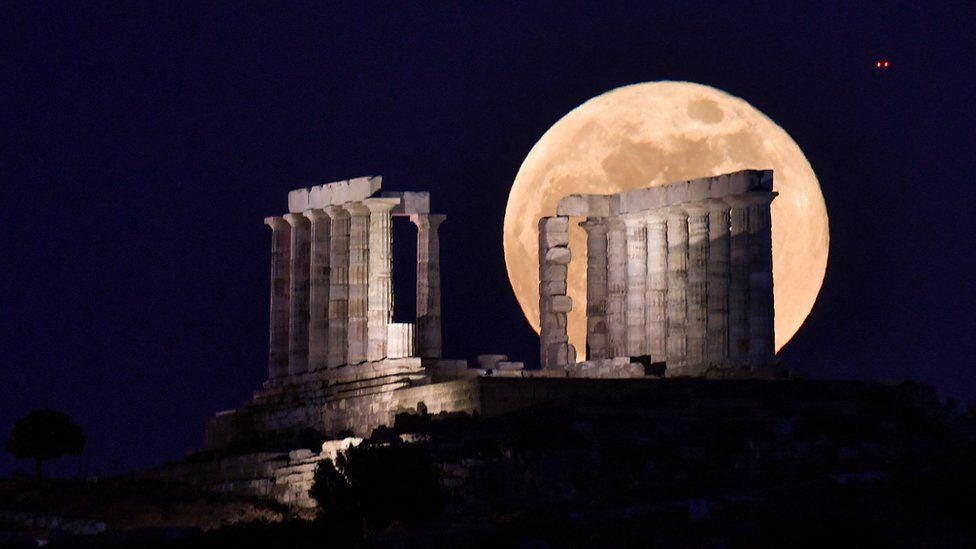
Dear Friend and Reader:
The Full Moon and Northern Solstice are approaching — two high-energy events that will coincide within one day. In this article, I comment from a few angles, though I want to start with some immediacy: this combination will send some vibrations through consciousness.
Take it easy. Not everyone is going to respond to it well. Others may feel exuberant, energized, extra witchy, extra sexy or just inclined to stay up super-late. This is a moment of revelation, however modest.
Our upcoming solar-lunar opposition is the first of two Full Moons in Capricorn. The second happens in the very last degree, closely conjunct Pluto July 21, just before the Sun enters Leo.
Events, Recycled or Endless
We live in a moment when it seems everything has been turned inside-out, with nothing left to be revealed. Everyone knows everything about everything and every one. There is no news; nothing that happens is new. All events in the public realm are either recycled or never seem to end. What we saw in 2020 was unusually strange, but was comprised of many bits and bobs swept together from past precedent and meticulous planning.
If this were all a movie, few would be interested — and people are losing interest in life as a result. Yet this is the result of disconnection, which manifests as malaise, ennui, isolation, and the feeling of being invisible — induced or greatly enhanced by digital conditions.
It’s true that random chance must enter at least some of the many scenarios we see playing out in the world around us. Not everything goes according to the planners’ design (operation ‘covid’ did not). Yet with the kinds of staged events we live through and witness in the public realm, it seems difficult to notice anything that happens spontaneously. Even something so wholesome as a ship knocking down a bridge has to include missing critical minutes on the safety data recorder.
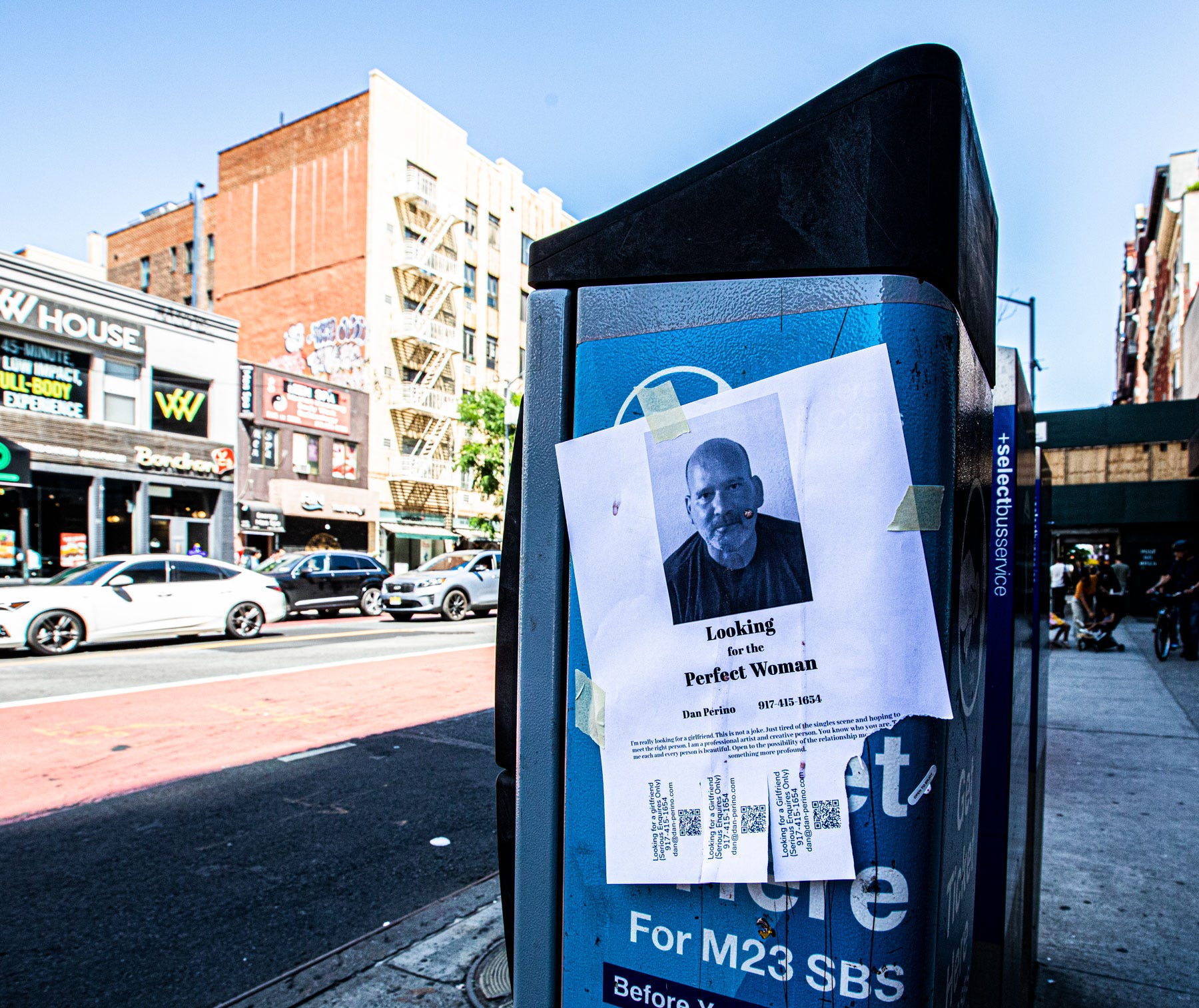
Projection and Repetition
More than anything else, we are the main thing that has been flipped inside out under digital conditions, and set up for repetition. Much of the stress that people are experiencing now is about having had their locus of identity shifted to outside themselves, and often detached from themselves entirely. Look at all the people who carry their brain around in their hands.
In psychology, this is called projection: seeing the inner world as an outside phenomenon. Projection seems to be a resident feature of human consciousness (and a problem), though now it’s become ever more difficult to observe since the notion of oneself as an interior being is increasingly difficult to grasp. Everything seems to be ‘out there’.
Then there is the problem of repetition. World society is now driven by millions of programmed scripts, which result in things like one-touch pizza delivery or a digital virus. We expect the devices we handle all day long to perform flawlessly as programmed. This is a metaphor for total control, and we absorb this property.
It’s difficult to see this for what it is, from our viewpoint today, surrounded by cameras, carrying tracking devices, and available (meaning connected) around the clock. I reckon if someone was transported from the future of 2024 and visited me and my friends hanging out on the lawn of John Dewey High School and described the world as it is today, we would recognize the problem. Today, engulfed in algorithms, and becoming like our tools and our environment, we barely do.

Capricorn Full Moon at Northern Solstice
Meanwhile, the planets show us at a revealing moment: the Northern Solstice followed immediately by the Full Moon. Today the Sun joined Mercury and Venus in Cancer. This will be the first of two consecutive Capricorn Full Moons, one happening very early in the sign, and one very late.
One beautiful and distinctive thing about astrology is that no two charts are the same, which is to say that no two moments and no two days are the same. This is the message of the medium of astrology: every day and every hour are in fact different from any other. While there are predictable planetary cycles, any time they repeat, all the other cycles are somewhere different.
Reading astrology is the first practical application of chaos theory, which depends on the skill of pattern recognition.
As for our moment: the Sun reached equinox and entered the cardinal sign Cancer at 4:51 pm EDT on Thursday. This is the Northern Solstice, when the Sun’s apparent direction of travel is pointed at the Northern Hemisphere. There is no nighttime in the Arctic, and in the Antarctic, it’s dark all the time.
My body feels this as tension: as a stretched sensation, and the Police song “Bring on the Night” comes to mind: I feel like I can’t stand another hour of daylight. Then all at once, the cosmic machine stops and up by me, the Sun starts creeping southward along the horizon — that’s where we are now. That’s the solstice.

Stretching Across the Horizon
The Sun at solstice means that it’s at one of the cardinal points, at a right angle to a tropic (in this case, of Cancer) which in turn all connect to this mysterious thing called the Aries Point (currently by square or 90-degree aspect). The Aries Point starts with the position of the Sun on the Vernal Equinox, which is the grand intersection where the individual and the collective meet.
Many other degrees around the sky ring the bell, including where any season begins, and the midpoints of all the seasons (days such as Yule and Litha, and others such as Beltane and Imbolc). They all act as amplifiers and resonators of public events, seeming to make them private — though lately I’m surprised anyone can notice any difference between that and anything else.

Side note: I am a professional editor and producer of many years’ standing, and I receive innumerable news feeds. Next to nothing I see come over qualifies as an actual “breaking” event even though much claims to be so.
Even more annoying is the use of the term “news flash.” Traditionally this is reserved for events of the very highest magnitude. News of the assassination of John F. Kennedy went over the wire services as a flash. Today, newspapers use that designation to describe a mugger getting caught.
This is a metric of how little matters, and yet all this harassing, irrenevant noise is hyped to seem crazy important all day long, vibrating your body as your phone goes off. This is a big part of our problem. We need better vibrators.
Back to astrology. The Full Moon takes place in the second degree of Capricorn on Friday, June 21 at 9:08 pm EDT.
Since it happens so close to solstice, this event resonates loudly with the Aries Point. And it will shake up the collection of objects in early Cap that I described last week — Ceres, Pholus, Ixion, Quaoar and Cupido. These all pertain to family matters, though really (as I will get into in a moment), they are about our interpersonal relationships today.
Ceres is the most accessible of these energies, yet its themes are so pervasive that it too is difficult to notice. In a few words, we could say they currently pertain to codependency, diabetes, obesity and fake food. And unprocessed grief.

A Brief Word about Cancer and Capricorn
Cancer and Capricorn are opposite signs. (They are in the cardinal sign group, which represents initiative, and also includes Aries and Libra.) Where winter begins in one hemisphere, summer begins in the other. When the days are long near the Tropic of Cancer, they are short in direct proportion at the Tropic of Capricorn and vice versa.
The symmetry of this is perfect throughout the world. (Time zones are political, artificial and are another matter.)
Cancer is the 4th sign and Capricorn is the 10th sign, and astrologers connect these to the 4th and 10th houses respectively. There are some similarities, but the performance is different. The signs mostly represent background energy fields, while houses represent specific environments and mental states we experience on Earth. (In earlier centuries, the signs were considered descriptive of places.)
Both Can and Cap represent the family brood, though Capricorn brings in the theme of multigenerational legacy (i.e., more than two generations).
Summarizing a book in a few paragraphs, houses 4 and 10 (a kind of vertical axis) represent parental relationships, though you need to do some work to figure out which house pertains to which parent. Also, many people have complicated family situations, and that takes some skill to sort out.
For example, adopted people can have biological parents, foster parents, adoptive parents and then the usual collection of spouses and ex-spouses. They have more “parents” than most people have second cousins. Do enough adoption cases and you get good at sorting out who is who in the chart. Your client has to sort out how they feel about all these people, and helping them with that is the real work of astrology.
Remember: the Cancer/Capricorn, 4th/10th axis, is almost always thought of as vertical, representing relationships where authority is an issue.
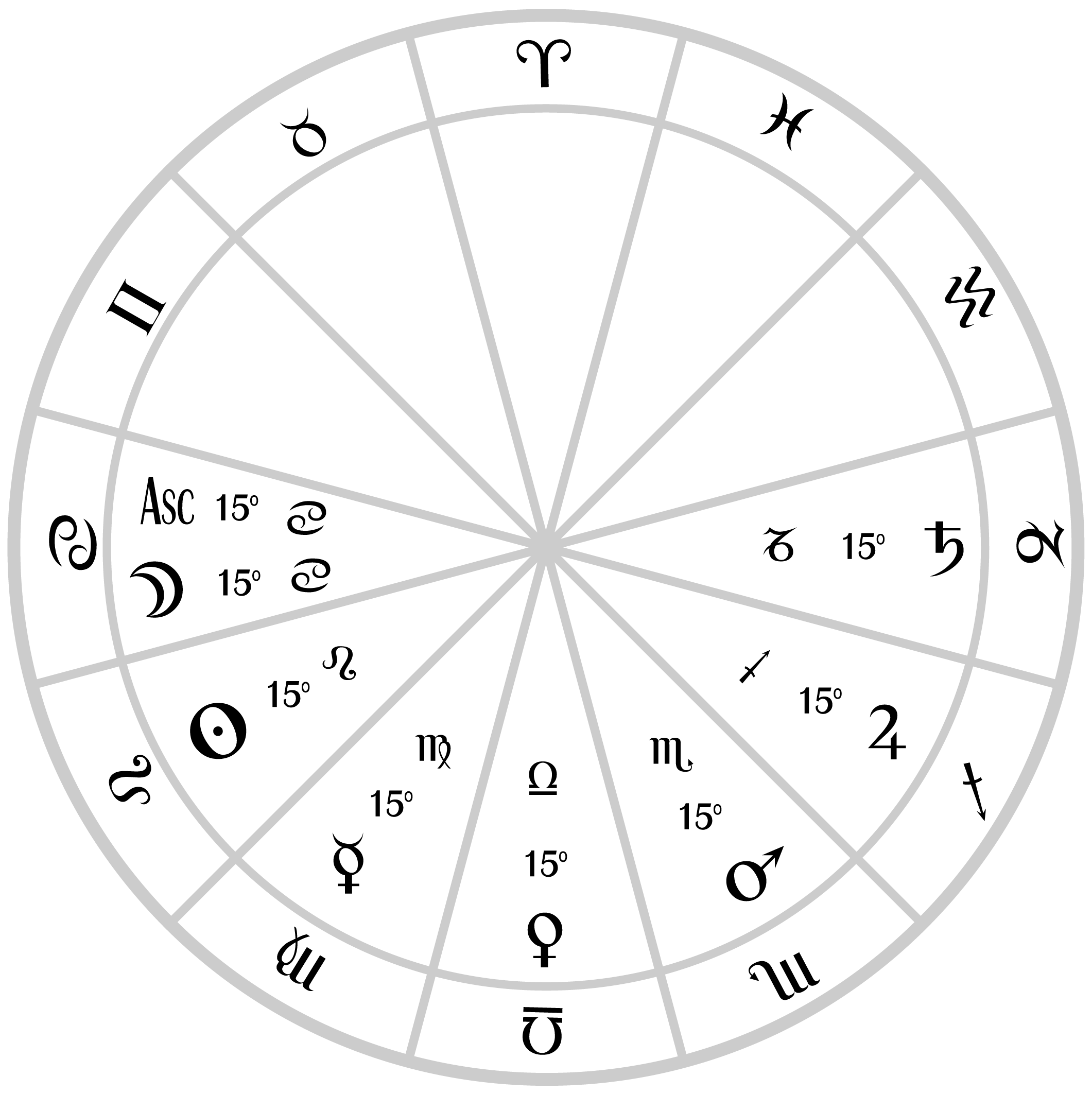
Then There’s the Thema Mundi
Gawd, I have not typed those words in a while. The Thema Mundi is a candidate for the oldest document in all of Greek astrology. The term translates loosely to “the chart of the world.”
It’s a kind of sample chart, deceptively simple as such. It dates to about 400 BC, when musical theory as we know it was being developed (note the similarity between the astrological chart and the musical Circle of Fifths; both are based on the wheel divided into 12 sections or keys).
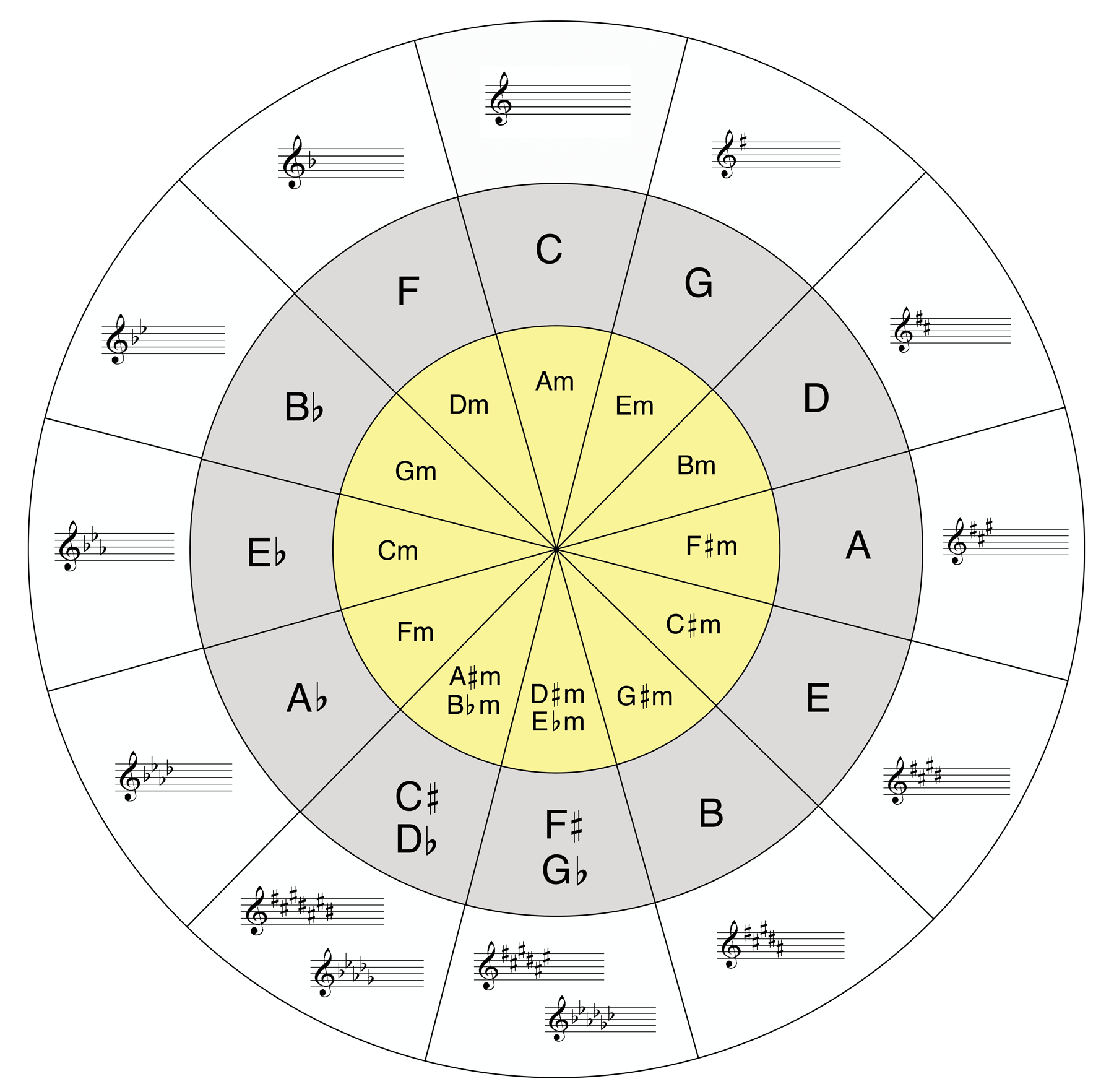
The Thema Mundi is a teaching tool; it’s a kind of Rosetta Stone of astrology. According to Rob Hand, extensive computer searches of actual planetary positions cannot recreate the chart at any time in history. So it’s a theoretical device. On this point everyone agrees, but what do you do with it?
The visible planets and luminaries are placed in their signs of primary rulership, so you find out what those are. But when you look at the chart, one thing stands out: the 1st house is not associated with the first sign Aries, but with the fourth sign Cancer.
This is no subtle shift. The 1st house is about primary identity. In the Thema Mundi, the early designers of astrology identified humanity with the sign of the family and nurturing (Cancer) rather than the one associated with competition, war and conquering (Aries).
They are similar in that they are both cardinal signs, but Cancer represents a milky breast and Aries represents a karate kick.
For its part, Aries in the Thema Mundi lands on the more aspirational 10th house — action, ambition and reputation. The whole wheel shifts 90-degrees from the usual 12-letter alphabet of Aries equals Mars equals the 1st house.
The 2nd House is Described by Leo, not Taurus
All the other resulting shifts are rich with meaning. Instead of Taurus on the 2nd house of cash and movable resources, Leo, the sign of gold, is there; mental (and food-oriented) Virgo lands on the 3rd house of ideas and commerce; relational Libra lands on the 4th house of family associations; and hormonal Scorpio lands on the 5th house of sex and creativity. It’s like everything suddenly drops into place.
You cannot do astrology without knowing the houses; the houses are how you know what you’re even talking about (including in the horoscope column). They describe the settings and the themes of the reading. Learning astrology is largely a study in these environments of activity where the planets show up and do something.
The Thema Mundi is the missing file of house delineation; relatively few astrologers have heard of it and information about it is somewhat scarce.

Thema Mundi Capricorn Lands on the 7th House
The 7th house is usually associated with marriage and partnership. If you’re standing on the ascendant and look west (to the left, since south is ‘up’ on an astrological chart), you’re looking right onto the 7th house. It’s the house of the other. Usually people think of this as being associated with Libra, the 7th sign.
Under the Thema Mundi, it’s covered by the structured, legacy-oriented sign Capricorn. It is difficult to say what, exactly, Capricorn represented 2,400 years ago (besides being ruled by Saturn, which is not so cozy). Yet this Capricorn confluence accurately describes our close personal relationships today: complex, overly structured, weighted down by obligation and guilt, and often resembling parental relationships (all connected to Capricorn).
Capricorn is ruled by Saturn, who is a harsh mistress. This kind of fits our current relationship themes of femdom, sexless marriages and debauchery (think: Saturnalia).
The 7th also represents the environment generally, something you will never read from another astrologer. By this, I mean that the 7th house is the ordinary world where we walk around in and encounter all the stuff that is not specifically us but that we relate to: the people we meet, the weather, routine social transactions, and so on.
I know these topics are potentially covered by other houses (such as the 3rd representing the local community). My observation is that the 7th is world we perceive and directly experience in our immediate perception rather than as a concept. We have just lived through approximately 16 years in this vicinity — the 7th house of the Thema Mundi — being dismantled, broken down, rearranged and disappeared by Pluto in Capricorn. The theme of deconstruction prevails in the years of Pluto in Capricorn (by the longest measure, 2008-2024)
The bomb that went off in 2020 was mostly about the Jupiter, Saturn and Pluto triple conjunction in Capricorn, a rare combination of influences to have in one place (on a multiple century scale). This conjunction was followed by a year of another heavy-duty event: seven contacts of Pluto in Capricorn square Eris in Aries churning up the chaos, into late 2021.
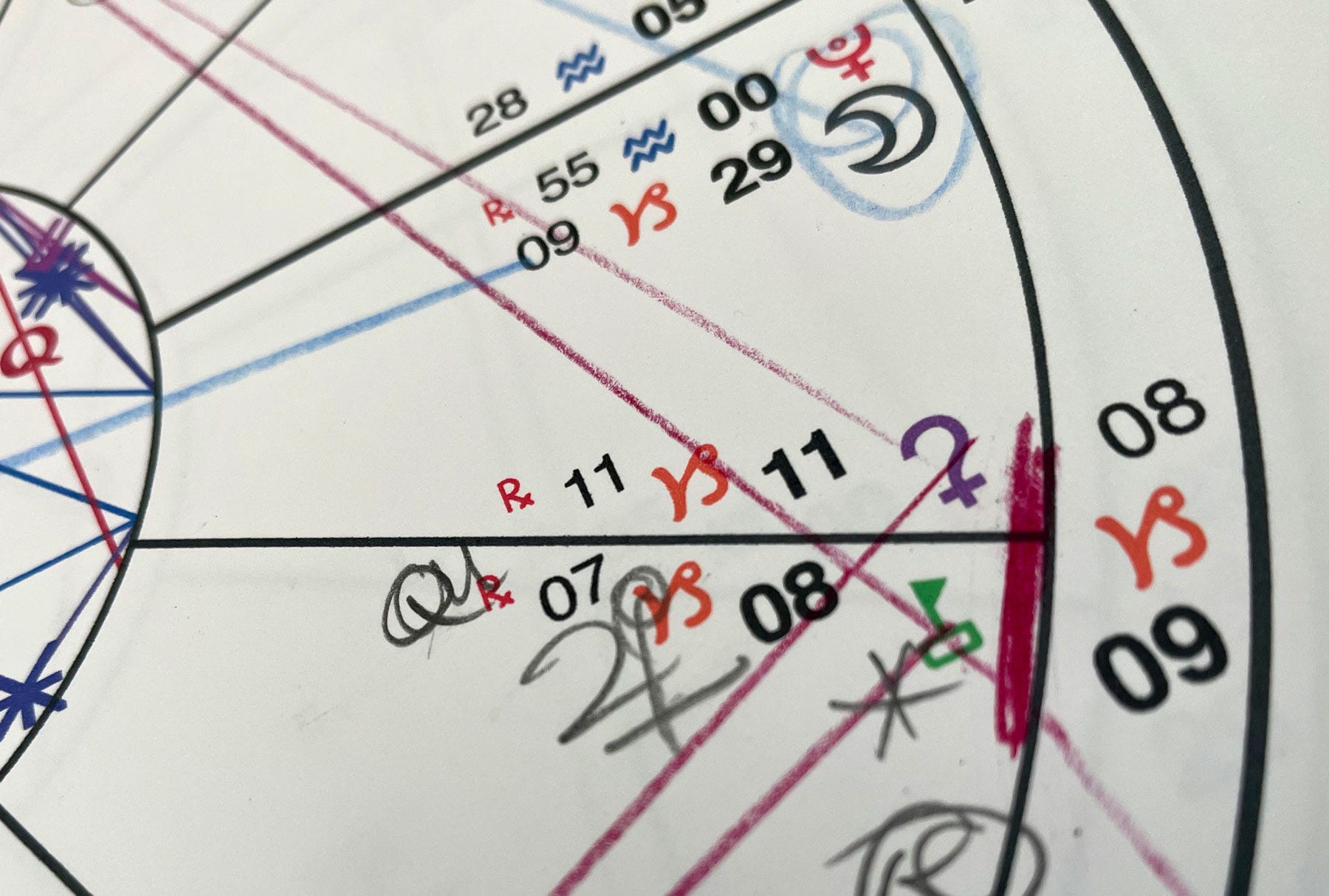
And Now, the Early Capricorn Group is There
Last week, I described the group of influences in early Capricorn — the combination of Ceres, Pholus, Ixion, Apollon and Quaoar. I described this as a “family hunger games” combination, which has opened a door into deep ancestry.
All kinds of stuff is bursting forth, colored by serious problems with alcohol and cruelty for its own sake. The combination of factors does not argue for a general state of trustworthiness in relationships.
Imagine a scene in a horror movie where a dimensional portal opens and anything in the nearby or distant ancestral past can come flooding in. This is influencing relationships and the idea of relationships. And as Ceres moves deeper into the mix it will register emotionally, for those who can feel.
Seen one way, the breach describes the physical world crumbling under digital influence, by which I mean all of AI, CGI, virtual, enhanced, simulated, or whatever else, created by zeros and ones. I don’t mean that buildings are falling down everywhere, though they are some places. I mean the psychic structures, protocols, ethics, traditions and expectations that hold society together. This is the destabilization of culture and intellect that Eric McLuhan wrote about.
It is difficult to describe this in a coherent way. But we see the effects in the form of all the people whose relationships are in crisis or who are living at the end of their tether but don’t understand why.
The Full Moon in Capricorn will shine some moonlight on what this is about. Remember that the Moon is reflected light rather than direct light. It provides a kind of intuitive mirror rather than a glary scene. It’s worth studying the shadows, on this the longest day, or the longest night.
With love,

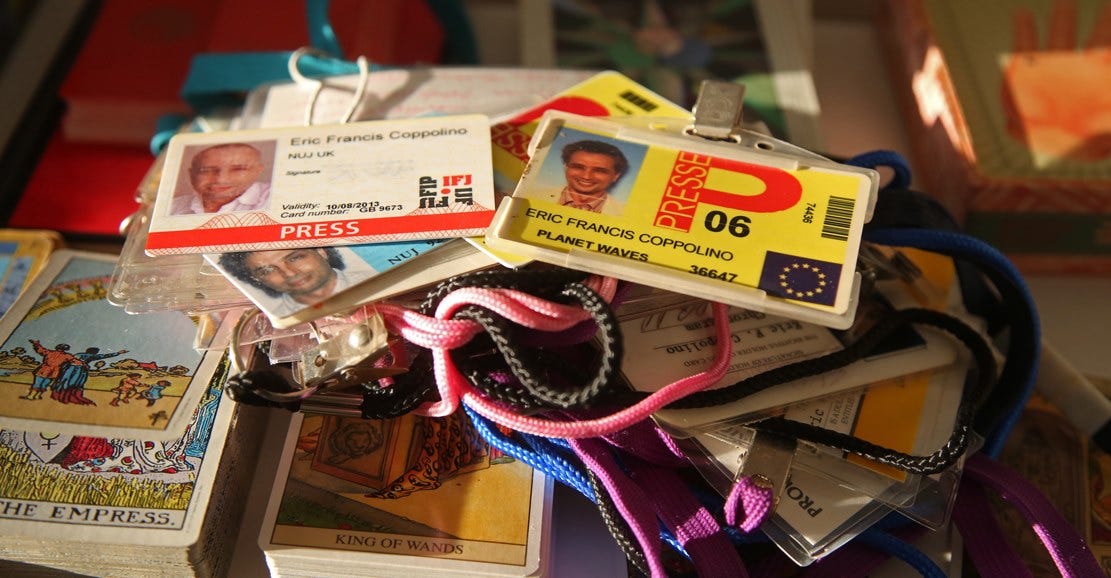



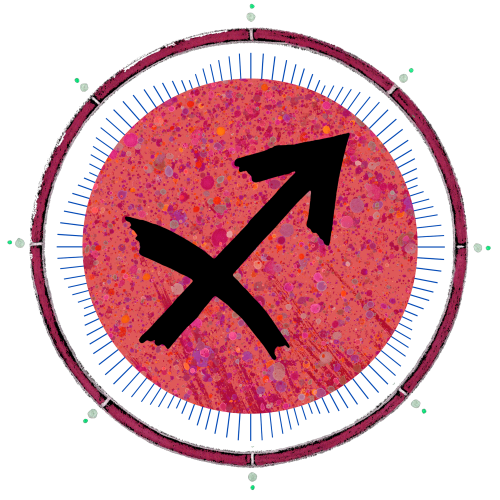
Thank you Eric, a lot to unpack and ponder. As always beautifully expressed. I love looking at your charts and would miss them if they were to go away. I don’t understand them but they are always appreciated. With gratitude and appreciation, Tara.